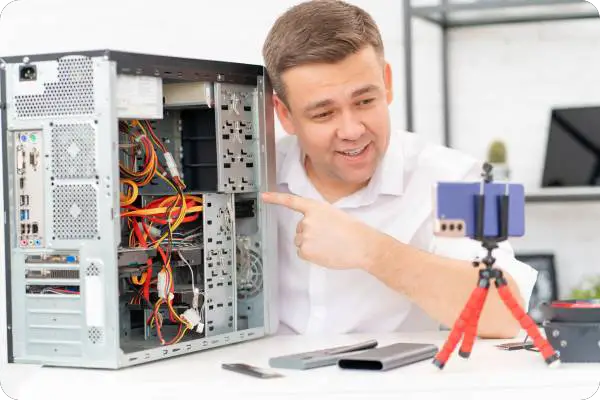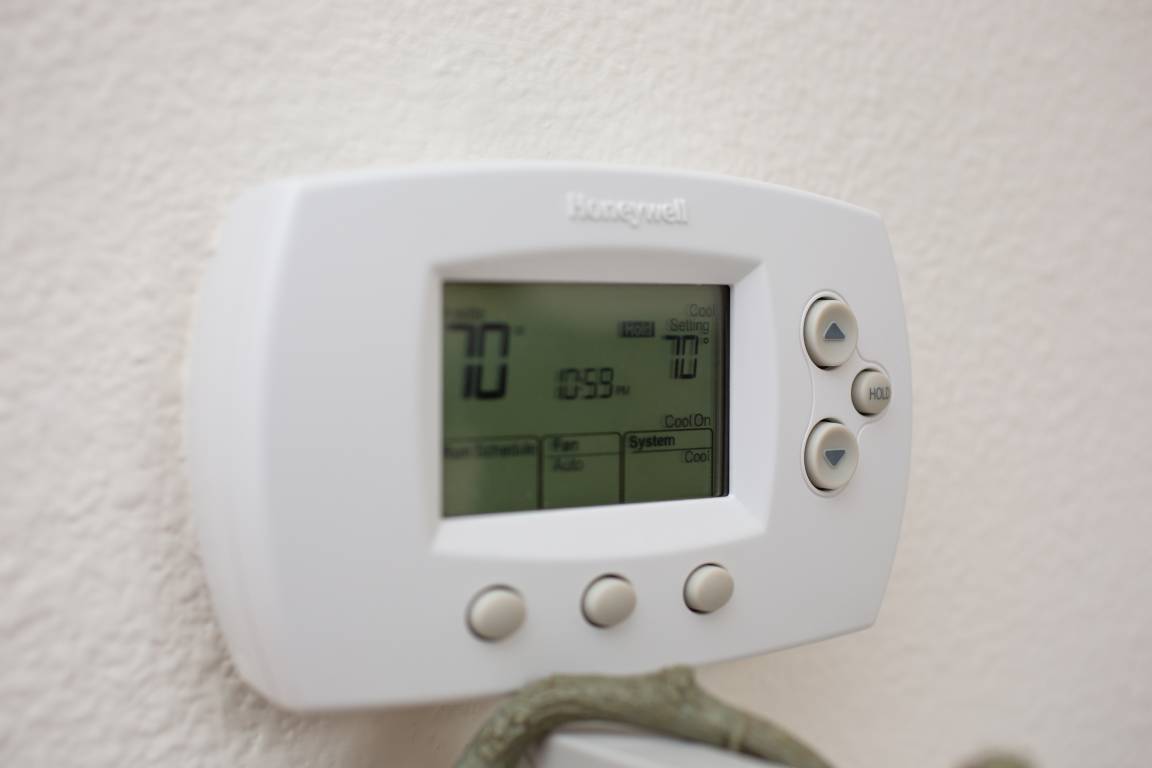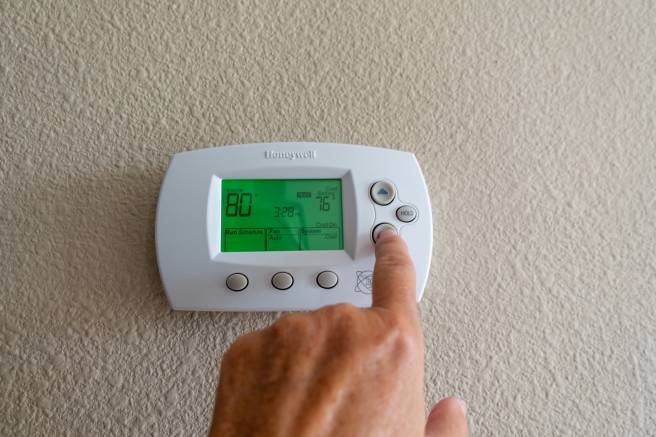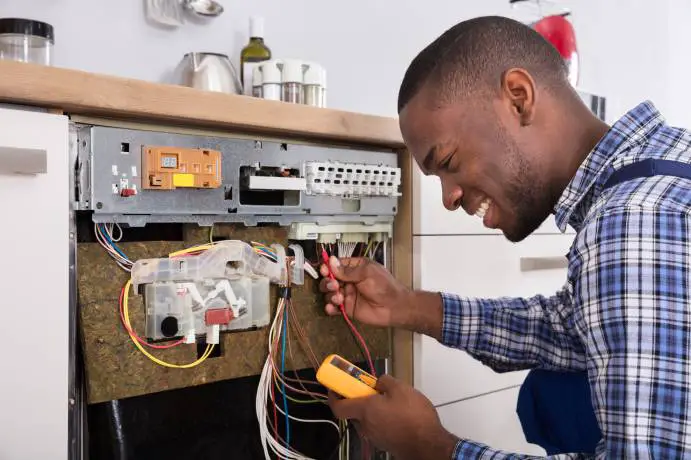Why does my Honeywell Thermostat say permanent hold?
It is like a thermostat that you set to stay at the same temperature as it is now, but it will not be adjusted any time soon; it just adjusts itself periodically as the temperature on your thermostat is adjusting. The temperature setting that you have selected will remain at that temperature for an indeterminate time.
Connect with the Expert via email, text or phone. Include photos, documents, and more. Get step-by-step instructions from verified Tech Support Specialists.
Using the automatic set-up feature of some thermostats, you can easily set a temperature that will stay consistent for an indeterminate amount of time.
If you want to set your thermostat to always retain its setting, simply turn it on and hold the button for a moment or press and hold it for a while to cause the desired temperature to remain steady.

Help with setup and starting issues, blinking error lights & all your repair needs in just minutes
Ask a Repairman Live NowHow do I get my Honeywell Thermostat off permanent hold?
Many programmable thermostats enable manual temperature setting in addition to overriding scheduled temperature settings. A thermostat is not on hold when it is operating according to its schedule. As a result, it modifies the temperature it has set to correspond to the times of day that are also specified by the program.
Connect with the Expert via email, text or phone. Include photos, documents, and more. Get step-by-step instructions from verified Tech Support Specialists.
- For temperature adjustment, press + or -.
- The setpoint temperature flashes and the message TEMPORARY HOLD is displayed. Press the Hold (Mode) button to switch to Permanent Hold while it is flashing.
- Press + or -, and then press Cancel to end the Permanent Hold.
How do I set my thermostat to permanent hold?
By hitting “Hold”, your current thermostat temperature will remain the same, it won’t go up or down or whatever. When it is time for you to schedule a time to do the things you normally do, press the “Run” button to start running the program again.
If it is something that you have been enjoying a lot and you want to upgrade it to something even more advanced, try a sophisticated thermostat by Four Seasons. You are able to set the thermostat according to what you want, while you are able to access the web and receive service alerts right to your phone.
Should my thermostat be on temporary hold or permanent hold?
Until it is manually overridden by a change in temperature, a permanent Hold will maintain the temperature at the predetermined level. It won’t ever run out on its own. A temporary Hold, on the other hand, will maintain the temperature at the chosen level for a predetermined period of time.
The thermostat will then resume its previously scheduled programming after that. By manually changing the thermostat’s set temperature, a user can always end a temporary Hold. The hold that is set will be overridden by this.
For this purpose, the temperature gauge may have plus (+) and minus (-) buttons. Also take note that a “Hold Until” setting may be used to indicate a temporary Hold. In order to set some thermostats to “Permanent Hold,” the user might need to do so.

Is it more efficient to keep the thermostat at a constant temperature?
If you want your house to stay at essentially the same temperature throughout the year, your HVAC system must work continually to maintain it. That is, you may not be able to stop running the furnace, air conditioner or water heater if you are not home or if you are at work or are otherwise away from home. It costs more to run your HVAC system continually than it will save you.
If your thermostat is programmed, you should set it to adjust the temperature when you are home. When you program the thermostat correctly, you can save as much as 30% on energy costs. That will save you money on monthly utility bills.
Programming thermostats helps you plan when the thermostat will be set to automatically turn on and off automatically when you aren’t home. These thermostats monitor your energy consumption, they can understand what you are doing, and they can automatically lower the temperature when you are ready to leave. You can use it with any computer or even with a smartphone.
What is the cheapest temperature to keep your house in winter?
You can conserve energy and permanently lower your energy costs by keeping the temperature of your home between 68 and 78 degrees Fahrenheit in the winter and around 78 degrees Fahrenheit in the summer.
Although it may be on the lower end of what some people would consider comfortable indoor temperatures, there are good reasons to keep your home cooler in the winter. Your home will lose heat more slowly when the temperature is lower than it would if the temperature were higher.
In other words, maintaining a cooler indoor temperature in your home will enable it to retain heat for a longer period of time and use less energy to maintain a comfortable indoor temperature. You’ll save energy and money as a result.
What temperature should I keep in my house to save money?
Energystar.com says temperatures in the home must be around 70 to 78 degrees Fahrenheit. If you’ll be away from your home for a long time, switching your temperature settings up to 8 degrees when you’ve gone away from your home can make your home more efficient.
Ideal sleeping temperatures are usually set at around 60 to 67 degrees Fahrenheit, and you may be able to fall asleep even more easily. When you get to bed, our body temperature falls significantly, according to WebMD. If it doesn’t warm up or cool down, it can cause your body to be agitated, and that can cause you to not be as comfortable as you should be.
But because everyone is unique, the temperature that you need to be comfortable while you are awake is not always what you need at night.
Is it cheaper to leave heat on all day?
The notion that it is less expensive to leave the heating on low all day is a myth, according to experts at the Energy Saving Trust. They make it abundantly clear that the best way to save money and energy in the long run is to only turn on the heating when necessary.
The important thing to realize is that the total amount of energy needed to heat your home is what matters. It goes without saying that your home constantly loses some energy (how much will depend on how good your insulation is). According to the Energy Saving Trust, it is preferable to only heat your home when necessary because doing so prevents energy loss throughout the day.
How can I keep my heat bill low in winter?
It’s strange to think about paying high utility bills in cold climates, but it is fairly common in much of the country. There are some easy things you can do to save money on your gas or electric bill. What you need to do is make sure your house is using gas or electricity efficiently. It’s as simple as turning off the lights in your home, and keeping your doors and windows properly maintained.
- Turn Off The Water Heater and Turn It Down.
- Change Your Furnace Filters.
- Take Care Of All The Windows And Doors In The House.
- Turn Off The Thermostat,
- Close Vents That Aren’t Being Used.
- Use your Ceiling Fan
- You Should Inspect Your Attic Insulation.
- Turn On the Bathroom Fan
How long should the house take to warm up?
The setback temperature for your home can take some time to find and may involve some experimenting, but 60 degrees is a good place to start. You should modify your program accordingly because it takes the average home about an hour to warm up from 60 degrees to 70 degrees.
By automatically determining the ideal temperature to use for your home while you’re away and turning on the heating to warm your rooms just in time for your arrival, smart thermostats can eliminate the hassle of experimenting.
Thermostats use an air sensor or a floor sensor to gauge the temperature of the space in which they are installed. These readings are crucial for setting setback temperatures and help the heating system run more effectively.
Is it cheaper to heat one room or the whole house?
It is more effective to warm just one room in your house than to warm the entire house — even if you’ve got an old space heater. It is safer to use a good quality heating oil or gas and a gas cylinder to heat most of your house.
If you are planning to heat just one room, it’s best to be prudent. If you’ve got a chronic illness or if there are very small children in your home, it’s not safe to go from one room to another. If it is necessary for you to be comfortable, you should avoid warming many rooms, if you do that you will have to go from a warm room to a very comfortable room.
Max Anthony
Mainly Max Anthony is an athletics tutor & lives in Texas but that's not it. He's is also a music producer, content creator, record producer, writer, and session musician. He has been producing music and engineering at a lower level for over 5 years. His passions include quality music gear and that's what he loves to write about on HifiBeast. ( Shoot him an email now )
Help with setup and starting issues, blinking error lights & all your repair needs in just minutes
Ask a Repairman Live Now

